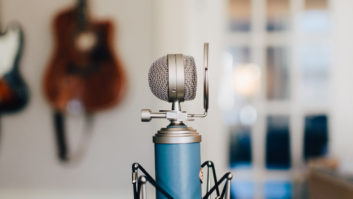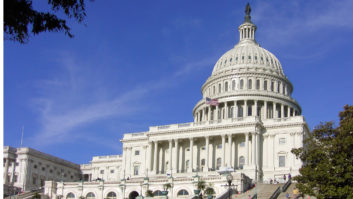The author is membership program director of the National Federation of Community Broadcasters. NFCB commentaries are featured regularly at www.radioworld.com.
Some of the great legends at my old community radio station were of the late-night in-studio musical performances. Some nights, local and touring artists who were fresh off a gig and a few drinks would shamble over to the studios near downtown, plop down in one of our sundry donated chairs, and weave stories about the road and what inspired all those songs. On more than a few of those nights, or early mornings, those musicians would take out their guitars and play a bit.
It was never polished or rehearsed. To crib the old Kanye West line, they were talking like it was just you and me.
[Read: Community Broadcaster: Now What?]
And then there were times when the whole band and crew would roll up after last call, do a quick and dirty gear set up, and just jam live on the air with anyone who showed up.
Such moments are part of community radio’s spontaneity and history. Whether you are WFMU or KEXP or somewhere in between those coasts, live music on the air has been part of who we are. It is our repudiation of the spit-shined corporate sound of so much of commercial radio, which rarely includes local performers or organic sounds. Where it feels like big radio sold the soul of music, with nary an errant chord or impromptu laugh or weird song, for advertising dollars, community radio has embraced in-studio performances, with all their hiccups and informality. Community radio’s championing in-studio concerts has gone on literally for generations.
Will a post-coronavirus world mute the music?
Already, many U.S. states have postponed live concerts. Live Nation and Ticketmaster are scrambling to avoid a financial cliff amid canceled and delayed shows. And the live-performance outlook isn’t looking great in the future. Epidemiologist George Rutherford voiced a common sentiment among health experts when he said, “I realize tons of people make their living doing this stuff, but I see [concerts] as pretty far down the list [in terms of opening events back up].”

For community radio stations, how we move ahead with business as states reopen and caution is encouraged is still a serious matter. College and community radio have typically had a very open attitude about students, community members and the public having access to their facilities. It is likely few have done an audit of their volunteer and staff to determine who could be at risk for contracting COVID-19. And then there is the issue of the public: who enters the building, when and under what safety protocols?
Then there is the situation with guests, including musicians — some of whom have been in areas hard hit by COVID-19.
In the short term, community and college radio seeking to reopen for the still quarantined may take inspiration from the many livestreamed concerts available to the public. Such shows, shared on platforms like Facebook Live, could give your station some techniques for hosting a socially distanced performance.
A few stations have organized lineups of artists playing live or recorded from their homes as a virtual festival. Hot technology like Zoom can allow you to make a given artist a gathering host. Musical communities are doing something similar with the viral collaborations we’re all hearing about; stations could also bring people together in this fashion.
Reopening for in-studio performances will require a careful review of a station’s cleaning policies, building access and setting clear expectations of volunteers and guests. While getting back to creating memories is a laudable goal, it cannot come at the expense of the health of everyone.







